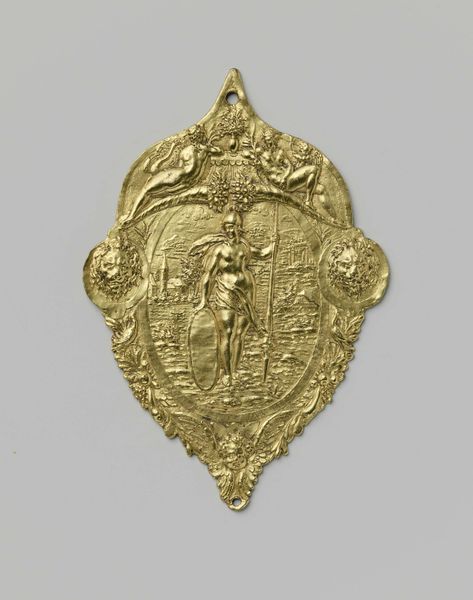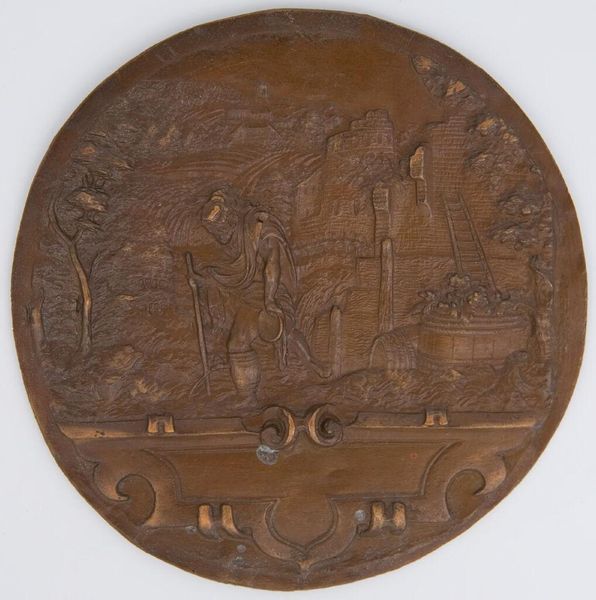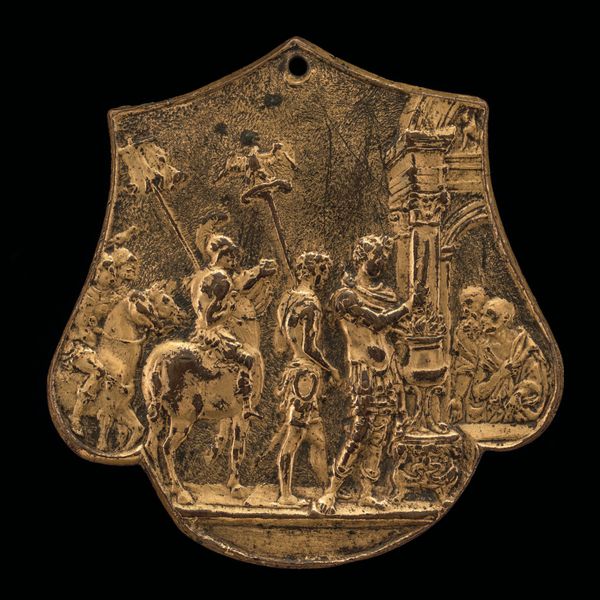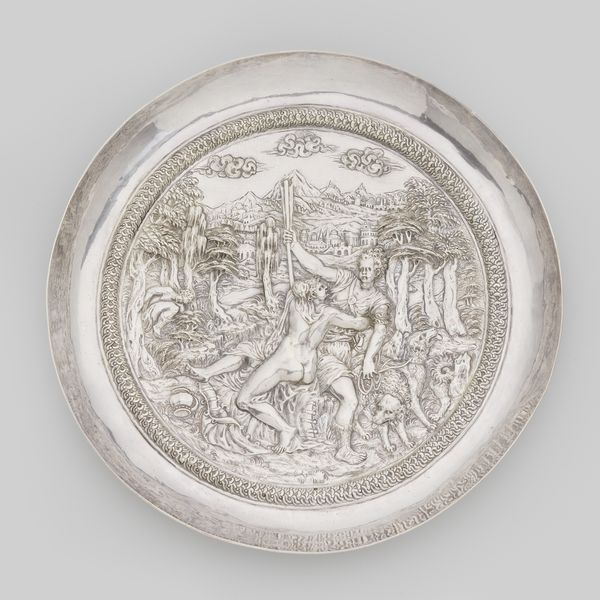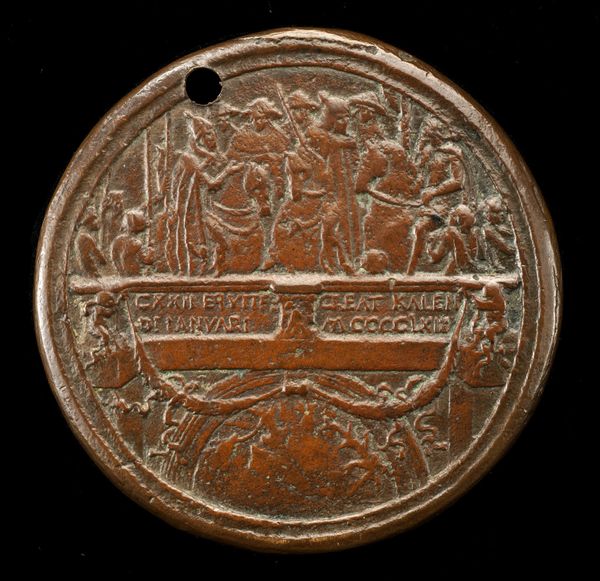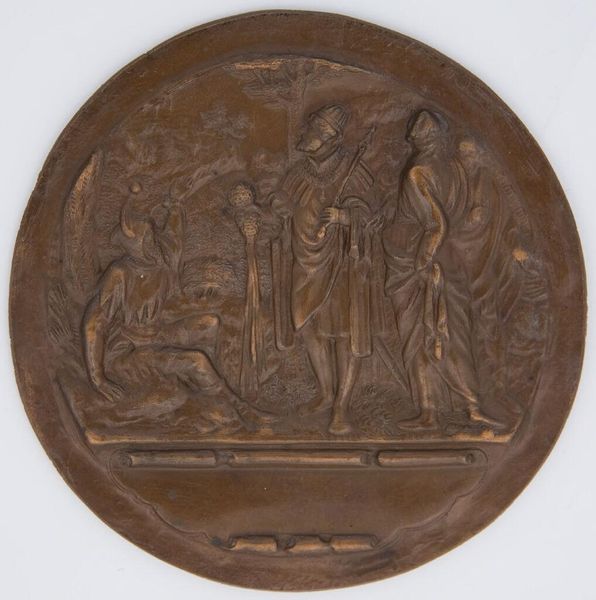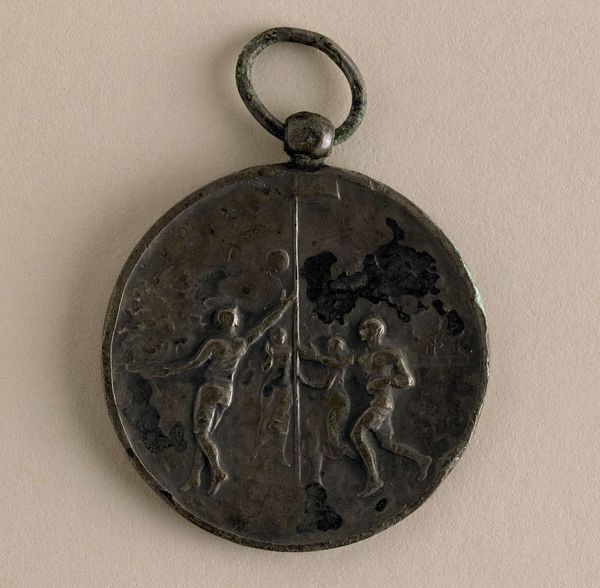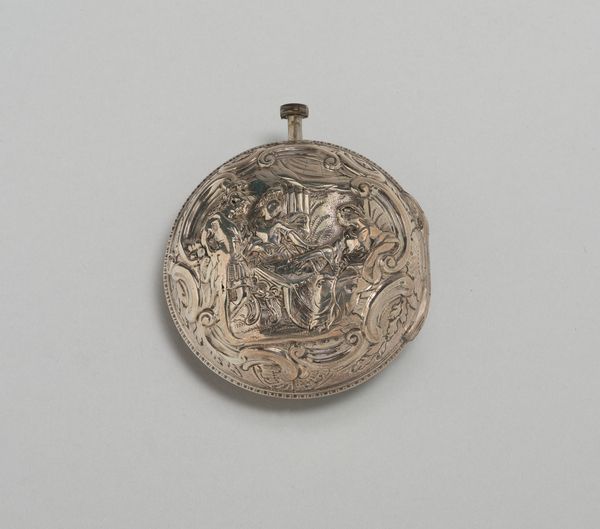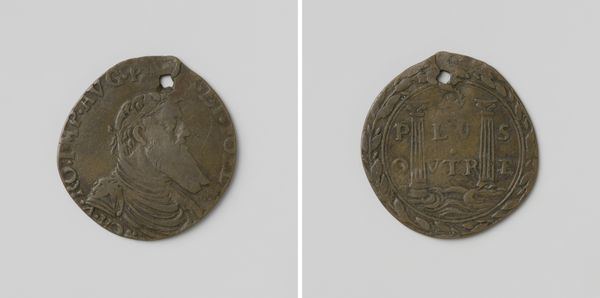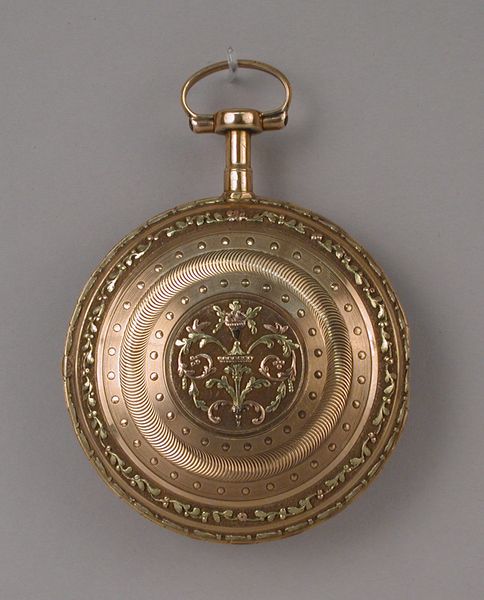
relief, bronze, sculpture
#
stone
#
sculpture
#
relief
#
jewelry design
#
bronze
#
figuration
#
sculpture
#
history-painting
#
italian-renaissance
#
erotic-art
#
statue
Dimensions: 9.1 x 5.7 cm, wt. 47.22 g.
Copyright: Public Domain
Curator: Welcome. Here we have Cristoforo di Geremia’s bronze relief, “Sacrifice to Priapus,” created sometime between 1437 and 1473. It’s currently held at the Metropolitan Museum of Art. Editor: It has quite the peculiar shape. It’s vaguely like a mirror or some sort of ornate hand-held object. What do you make of the overall design? Curator: The oval shape contains the central figuration with its dynamic play of forms, drawing the eye into its composition. Look at the subtle shifts in relief and how the textures interact; that contrast generates both depth and rhythm. Editor: My attention is drawn to Priapus, a fertility god from Greek and Roman tradition. Observe how the central statue looms phallically large as an object of devotion. It suggests fertility, yes, but also a certain kind of brazen potency. Curator: Indeed. Note the precise arrangement of the figures around the deity. Each contributes to the narrative, furthering the understanding of gesture and emotion within this bounded plane. See the women bringing gifts. Editor: It underscores an interesting cultural anxiety, don’t you think? Male potency ritualized as a public act and an acknowledgement of procreative power that sustains society. I am curious about the significance of the 'LCI' inscription—do you have insights on that? Curator: Scholarship suggests those initials might refer to one of several notable individuals within Renaissance society; alas, that is still actively debated. That emblem anchors the composition vertically, dividing upper symbolic space from base materiality— Editor: All those carefully wrought figures offer a rich symbolic tapestry—wealth, sensuality, earthly concerns. I find myself wondering if that potency carries into a broader social order; is it just biological or something far more potent? Curator: What I admire here is the capacity for rendering these cultural codes. Cristoforo has employed a meticulous and strategic hand within a circumscribed area. He offers form and order, skillfully realized. Editor: I see the echo of older traditions, certainly, a need to make sense of a complex world through repeated patterns and figures of masculine generative strength. Thank you. Curator: My pleasure. It highlights what we can grasp when form meets symbolism, creating tension, yet equilibrium.
Comments
No comments
Be the first to comment and join the conversation on the ultimate creative platform.
